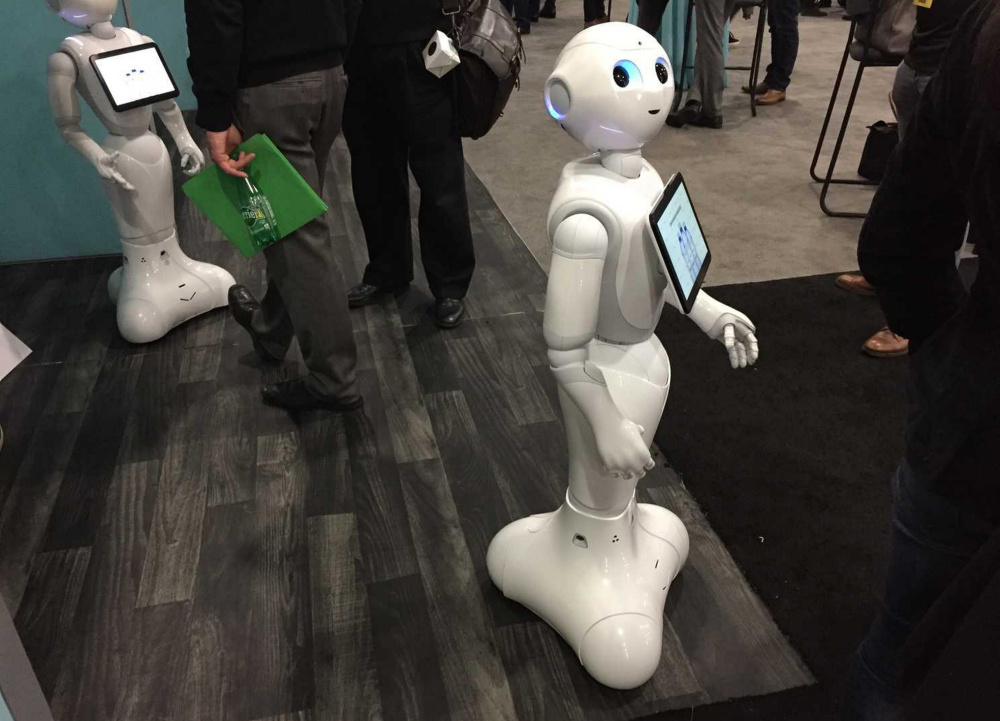NEW YORK — As soon as you approach Pepper, a four-foot-tall robot, she starts sizing you up.
Thanks to facial recognition capabilities, Pepper can determine your gender and age bracket. And as you begin asking her questions, she can draw from a vast volume of cloud-based information to give what she thinks are relevant answers. If you smile, she can tell the conversation is going well and that you’re finding her answers helpful. If you don’t, she might ask you if she’s misunderstanding your requests.
Pepper’s maker, Softbank Robotics, has a vision of a world in which many retailers incorporate this technology into brick-and-mortar stores, in which it feels normal and reflexive for you to approach a robot with customer service questions.
It’s part of a wider push across the retail industry to bring more automation and data science to one of the few parts of the business that largely remains an art: The act of making a sale.
At the National Retail Federation’s Big Show, an event here attended by tens of thousands of industry professionals, demonstrations abounded of technology that could assist a store employee in closing the deal – or, in some cases, that could answer the very questions clerks might typically help with.
These innovations present tantalizing possibilities for retailers, who can ill afford to lose any opportunity to satisfy or even upsell a customer at a time when mall foot traffic is tumbling precipitously. But the advances also raise thorny questions about what the retail workforce of the future will look like if a growing array of tasks can soon be punted to robots or tablet applications.
When you first encounter Pepper, it’s hard not to be struck by the quirky novelty of the situation: You’re being chatted up by something that looks part anime cartoon, part “Star Wars” stormtrooper. And yet the interaction feels strangely familiar, because of how uncannily humanoid her gestures are. From the way she cocks her head when asking a question to the way her fingers curl up when she draws her hands to her hips, it all feels very integrated.
Because of that, “one of the challenges we have from a marketing perspective is managing your expectations of what a robot like this can do,” said Steve Carlin, vice president at Softbank Robotics.
In other words, the form-factor is so compelling that people start asking Pepper questions that, at least for now, are out of her depth.
Demonstrators offered several possible use cases for Pepper: Retailers could position her at an endcap – the eye-catching display at the head of an aisle – or in a specialty department, where she could answer questions about a featured product. Or she could help you identify which shoes you might want to buy based on what your priorities are. On a budget? She’ll steer you toward the cheapest pair. Like to be comfortable? She’ll suggest a functional pair of sneakers.
After being used at Softbank Mobile stores in Japan for several years, Pepper made her debut in the U.S. market in November, launching at two Westfield Malls in California.
In that iteration, she is programmed to do things like give shoppers directions to a certain store.
Don’t expect to start seeing a massive army of Peppers right away: Softbank says that there is only one facility in the United States currently equipped to service and repair the robots, and the company doesn’t want to deploy the technology too widely until it has built out more logistics and capacity for managing that.
Copy the Story LinkSend questions/comments to the editors.



Success. Please wait for the page to reload. If the page does not reload within 5 seconds, please refresh the page.
Enter your email and password to access comments.
Hi, to comment on stories you must . This profile is in addition to your subscription and website login.
Already have a commenting profile? .
Invalid username/password.
Please check your email to confirm and complete your registration.
Only subscribers are eligible to post comments. Please subscribe or login first for digital access. Here’s why.
Use the form below to reset your password. When you've submitted your account email, we will send an email with a reset code.